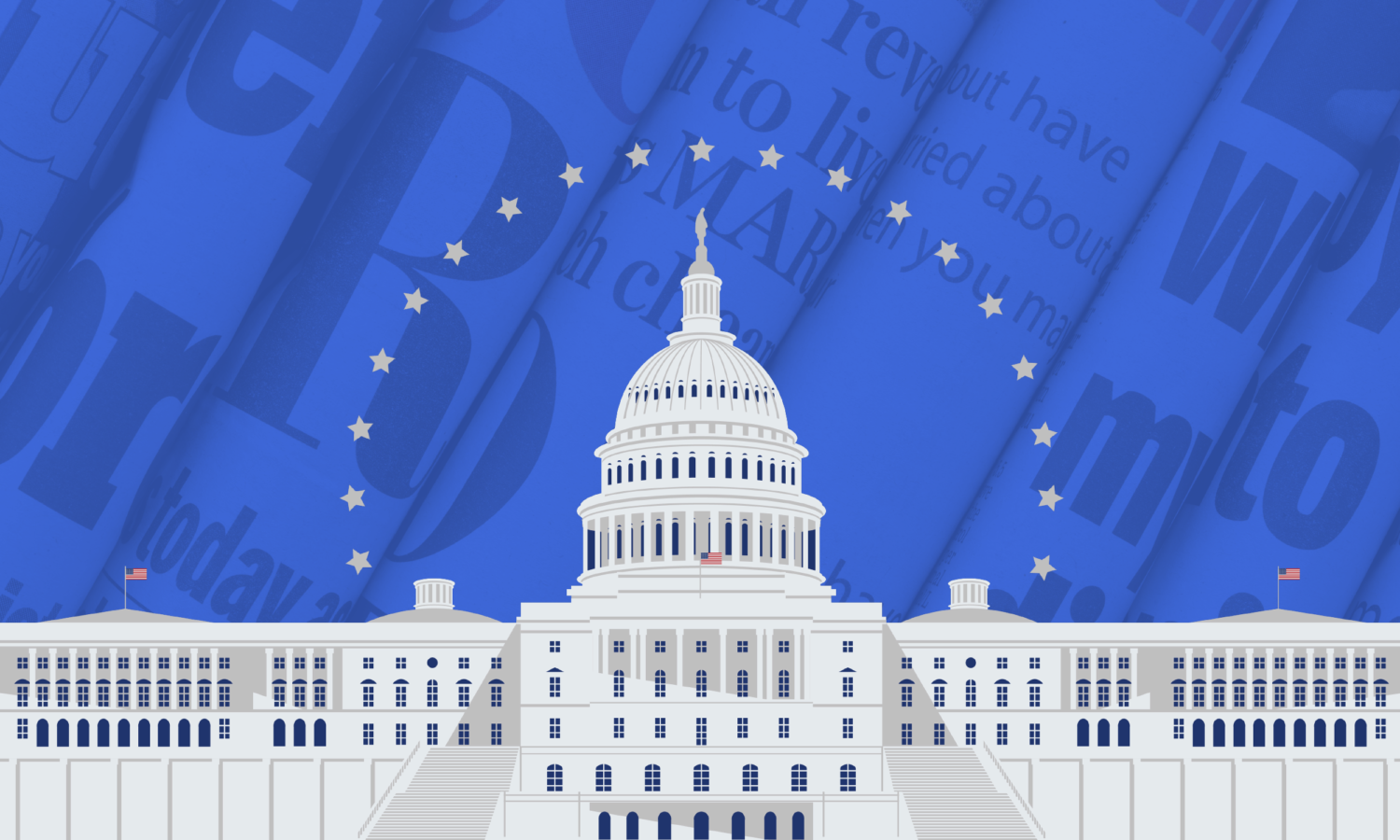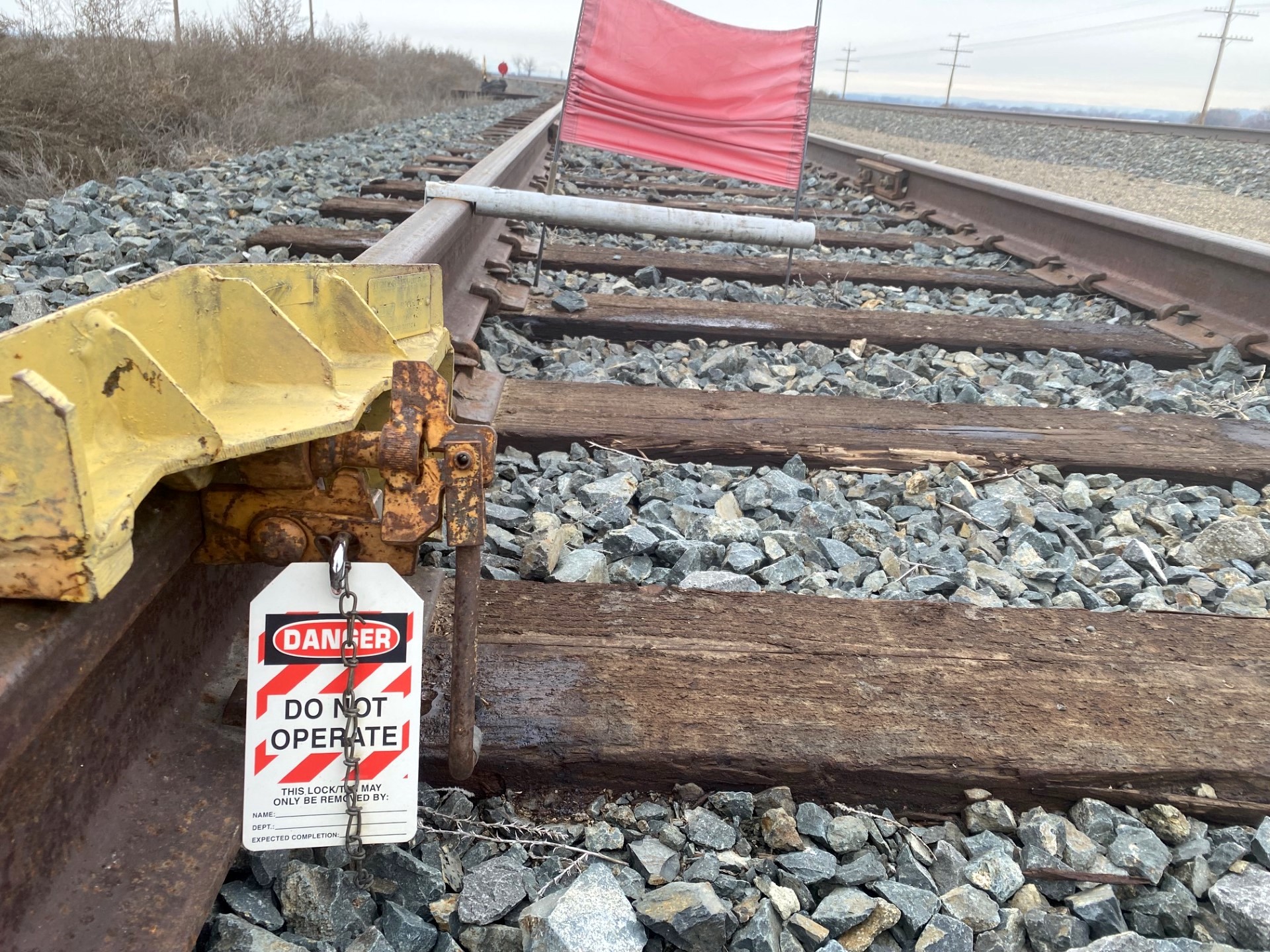After a devastating pandemic that shuttered newspapers and eliminated thousands of jobs, journalism advocates say they are optimistic that Congress will finally step in to support the struggling industry.
At least two major bills to help journalism have been reintroduced, and more are on the way. The three pieces of legislation that have gotten the most publicity — the Journalism Competition and Preservation Act, the Local Journalism Sustainability Act and the Future of Local News Act — are not new. But advocates say they are increasingly confident that the bills will gain traction this legislative session as members of Congress realize the dire circumstances newsrooms face.
“While we in the industry know that we’ve had challenges for a number of years, I think the public in general is just now becoming more aware of the struggles we’re facing as an industry,” said America’s Newspapers CEO Dean Ridings.
Ridings added that legislators are seeing firsthand the negative effects of newspapers in their districts closing or reducing their coverage.
“You see national media taking hits pretty frequently, but local news media is often better accepted by the legislators,” Ridings said. “I think legislators feel that their hometown news sources do have value.”
The bills vary widely in approach. Below, we break down each piece of legislation, who it counts among its supporters and the likelihood it will be passed.
Journalism Competition and Preservation Act
Reintroduced on March 10 in the House and Senate, S.673/H.R.1735 the Journalism Competition and Preservation Act has already drawn considerable support. If passed, the bill will grant news publishers immunity from antitrust laws for four years, allowing them to collectively negotiate with technology companies like Google and Facebook.
The Senate version of the bill has four co-sponsors while the House version has 27. Legislators on both sides of the aisle support the bill including Sens. Amy Klobuchar (D-Minn.), Cory Booker (D-N.J.) and Rand Paul (R-Ky.) and Reps. David Cicilline (D-R.I.) and Matt Gaetz (R-Fla.).

Sponsors and original co-sponsors of the Journalism Competition and Preservation Act (Photos: Congress, Graphic: Ren LaForme)
Many news publishers argue that companies like Google and Facebook are pocketing much-needed digital advertising revenue, essentially profiting from content they did not create. According to the News Media Alliance, which represents more than 2,000 publications, platforms take as much as 70 cents of every dollar made in digital advertising. News publishers also pay an “ad-tech tax” to middlemen and ad tech vendors, further depressing revenue.
“We need to establish the principle that the large social media platforms cannot continue to rake in all of the advertising money based on content that they’re not producing themselves,” said Tonda Rush, public policy director and general counsel of the National Newspaper Association, which has more than 1,500 member newspapers.
The News Media Alliance has been a leading advocate of the bill. In an interview with Poynter earlier this year, News Media Alliance president and CEO David Chavern pointed to the bipartisan support the bill has received as one reason he is optimistic about the bill’s chances. He also said there has been increased interest in Congress to regulate tech monopolies. Both Google and Facebook are the subject of antitrust lawsuits filed by the federal government and the states, indicating widespread support for regulation.
Though Rush and the National Newspaper Association support the Journalism Competition and Preservation Act, she said she has some concerns about whether the bill will provide much assistance to smaller newspapers. The group largely represents papers with a circulation of less than 5,000.
“One of the concerns and one of the realities for us probably is that however compensation is going to be directed, the media with the larger audiences will get a larger share of the compensation,” Rush said.
The NewsGuild, a union representing more than 25,000 journalists, also is watching the bill. But the union refuses to support it until language is added to ensure that at least 60% of any additional revenue earned is tied to jobs, NewsGuild president Jon Schleuss said.
The issue, Schleuss said, is that the journalism industry is seeing increasing consolidation, and many financial actors do not care about investing in local news. If the bill passes as is, news companies would not have a legal obligation to use money they earn to keep local journalists employed.
“Whatever added revenue needs to be tied to jobs,” Schleuss said. “It can’t go to executive compensation. We can’t have stock buybacks, we can’t have dividends. It needs to go to jobs.”
Local Journalism Sustainability Act
The NewsGuild is instead throwing its weight behind H.R.7640 the Local Journalism Sustainability Act — another bill that has gained support among many industry advocates.
The bill has not yet been reintroduced during this session of Congress. Francis Wick, president and CEO of newspaper chain Wick Communications, said Rep. Ann Kirkpatrick’s (D-Ariz.) office has been updating the bill, and he expects it to be reintroduced in June.
This year’s bill will largely resemble the version that was introduced last fall, which had three main parts. The first gave subscribers to local newspapers a tax credit of 80% of the cost of a subscription during the first year and 50% each subsequent year; the credit maxes out at $250 a year. The second relieved employers of 50% of their payroll taxes (on up to $12,500 per quarter) for one year for journalists they employ and 30% in quarters after. The third gave small businesses tax credits for advertising with local news outlets: up to $5,000 the first year and up to $2,500 in subsequent years.
The new version of the bill will have more specific details about its funding mechanisms, Wick said.
Last year, the bill had 78 co-sponsors including Reps. Elise Stefanik (R-N.Y.), Ben Ray Luján (D-N.M.), Cheri Bustos (D-Ill.), and Louie Gohmert (R-Texas). The widespread, bipartisan support indicates “an appetite in Congress to help support local journalism,” Ridings said.

Sponsors and original co-sponsors of the Local Journalism Sustainability Act (Photos: Congress, Graphic: Ren LaForme)
Supporting the bill is a major priority for America’s Newspapers, Ridings said. Collectively, the three parts will make a “big difference” for an industry that has been hit hard by the pandemic.
“As we are seeing our industry continue to transition to a more digitally supported future, this would provide a bridge to help them throughout that process,” Ridings said.
Before the digital age, many newspapers flourished thanks to print advertising dollars. But as more and more readers started to consume their news online, papers had to readjust revenue models and business strategies since digital advertising didn’t bring in nearly as much money. Many are still adjusting.
The Local Journalism Sustainability Act allows newspapers some breathing room, giving them much-needed financial relief while they determine what business model would be best for them, Wick said.
“It lays the groundwork, across the board, for organizations to identify what that future model is for them. It’s not going to be the same model in every market,” Wick said. “But it gives a bridge, and it gives ample time to invest in what that (model) is going to look and feel like.”
The bill has garnered support from a number of journalism organizations, including the NewsGuild and the News Media Alliance. Despite that support, Schleuss said that he would like to see a few improvements like expanding the tax credit for hiring journalists.
One issue the bill could run into is a stacked legislative docket. Congress and President Joe Biden have a number of other issues they are prioritizing — namely, infrastructure. Kirkpatrick still has not reintroduced the bill, and some advocates worry that she is running out of time.
“It always surprises people to realize that in May, we start to get anxious about the number of legislative days left,” Rush said. “The reality is, there’s June and July for action, and then Congress is usually out most of August. And in September, they’re working on appropriations bills. And then generally in the first term, they adjourn, and then maybe come back in November for a few days.”
“We don’t have all that much time left to do things this session.”
Future of Local News Act
The third major bill journalism advocates are tracking is S.1601/H.R.3169, “A bill to establish the Future of Local News Committee to examine and report on the role of local news gathering in sustaining democracy in the United States.”
Reintroduced on May 12 by Sen. Brian Schatz (D-Hawaii) in the Senate and Rep. Marc Veasey (D-Texas) in the House, the two bills collectively have three co-sponsors: Sens. Michael Bennet (D-Colo.) and Klobuchar and Rep. Brian Fitzpatrick (R-Penn.).

Sponsors and original co-sponsors of the Future of Local News Act (Photos: Congress, Graphic: Ren LaForme)
The bill seeks to create a 13-person committee of industry experts, diverse in experience and geographic location, to study the issues the journalism industry faces. That committee would have one year to conduct its research before submitting a report to Congress with findings and recommended solutions to support the industry.
Though the bill has received broad support from major journalism organizations including PEN America, the Society of Professional Journalists and Local Independent Online News Publishers, some note that the bill doesn’t guarantee action. After the committee shares its report, it will be up to Congress to decide whether to pass further legislation.
“I’m a little more interested in action than I am in commissions,” Ridings said. “But I think some of these (commissions) can be good in understanding the problems and defining the problems better.”
PEN America interim Washington director Dokhi Fassihian said she views the bill as being more “comprehensive” than other pieces of legislation, which she said address the issues journalism is facing in a “more specific, narrow way.”
“While you’re passing some stopgap measures and you’re doing things to help as much as you can, there does need to be a very careful look at what works best and what won’t work,” Fassihian said. “I think what we need to come to terms with as a country is that this is not a problem that we can solve tomorrow. This is a larger, structural — almost infrastructural — problem.”
The committee could analyze different models for governmental support of journalism, looking at examples from history and across the world, Fassihian said. She added that a “rethinking and a reimagination” of the current system is required.
That’s the conclusion PEN America drew in its 2019 report “Losing the News,” which paved the way for the bill. The report cites studies finding that the U.S. has lost more than 1,800 local print papers since 2004, and total newsroom employment has dropped by roughly a quarter from 2008 to 2018.
“Given the scope and scale of the problem, a solution is unlikely without dramatically expanding public funding for local journalism,” reads one of the report’s key conclusions. “PEN America is calling for a new congressional commission … to assess the viability of these options and recommend a path forward.”
Other action

President Joe Biden delivers a speech on infrastructure spending at Carpenters Pittsburgh Training Center, Wednesday, March 31, 2021, in Pittsburgh. (AP Photo/Evan Vucci)
Over the past few years, a number of other bills concerning the news industry have emerged in Congress before stalling from lack of support. In addition to the aforementioned three bills, journalism advocates are looking for other opportunities to protect local media.
One potential route is Biden’s $2.3 trillion infrastructure package, the American Jobs Plan. The bill aims to overhaul American infrastructure, create millions of jobs and push the country towards a greener, more climate-friendly future. Now, some want to add saving journalism to that ambitious list.
Eighteen journalism groups — including the National Newspaper Association, the National Association of Hispanic Publications and Report for America — signed a letter to Congressional leaders on May 26, calling local news a crumbling “pillar of democracy’s civic infrastructure.”
“The infrastructure bill is called the ‘American Jobs Plan.’ Supporting local news preserves jobs, to be sure,” the letter reads. “But it is more than that, as it will also help local communities thrive and democracy endure. We urge you to include measures in the infrastructure bill that reinvigorate local news.”
Sen. Maria Cantwell (D-Wash.) has already called on Congress to add roughly $2.3 billion worth of tax credits and grants to help newspapers and broadcasters. America’s Newspapers reported that under her proposal, the tax credits would help pay for employee health care, benefits and payroll while the grants would come from the Department of Commerce and help newspapers hire journalists.
Rush said in an interview prior to the May 26 letter that the National Newspaper Association’s board had some “discomfort” with the idea of accepting direct grants from the government. Historically, many newsroom leaders have hesitated to accept government money, believing it would compromise their editorial integrity, though the pandemic has started to change those attitudes.
Report for America president and chair of the Rebuild Local News Coalition Steven Waldman has fewer qualms. In an op-ed for Poynter, he argued that a system in which the government directly rewards taxpayers for supporting newspapers would allow consumers to decide who gets funding: “It is strictly nonpartisan and nonideological.”
The infrastructure package is still very much in development as Biden continues to negotiate with Republicans, whose latest counteroffer — which he rejected — amounted to $928 billion. It is unclear what will make it to the final version of the bill and whether support for journalism will be added.
Another ongoing initiative that does not have a bill attached is the News Media Alliance and National Newspapers Association’s push to secure federal advertising dollars for local newspapers. Both groups sent a letter to Biden on May 13, urging his administration to use newspaper advertising to promote the COVID-19 vaccines.
Biden has set a goal of partially vaccinating at least 70% of American adults by July 4, but some experts say that is becoming increasingly unlikely. The News Media Alliance and National Newspaper Association argue that the administration can build trust in the shots by reaching vaccine-hesitant populations through local newspaper advertisements.
“We have a substantial minority of Americans who say they don’t want the vaccine. … They tend to be skewed — as far as we can tell — in older, more rural communities,” Rush said. “That’s where a lot of community newspapers publish, so you’d think that that would be the first place you’d look to try to reach a vaccine skeptic population.”
The National Newspaper Association has been meeting with Congress members to discuss this plan and have found many to be receptive, Rush said. Last year, more than 240 representatives signed a letter to then-President Donald Trump, urging him to direct federal agency advertising dollars to local media.
“There’s a lot of concern, particularly since there was direction given last year that the agencies should be doing more with their local media,” Rush said.
More from Poynter:
- How many plans to save local journalism are too many?
- Opinion: Why local news should be included in the infrastructure bill
- Opinion: How the government can help save local news without endangering its editorial independence
- Opinion: A government fund to help journalism … that wouldn’t corrupt journalism







